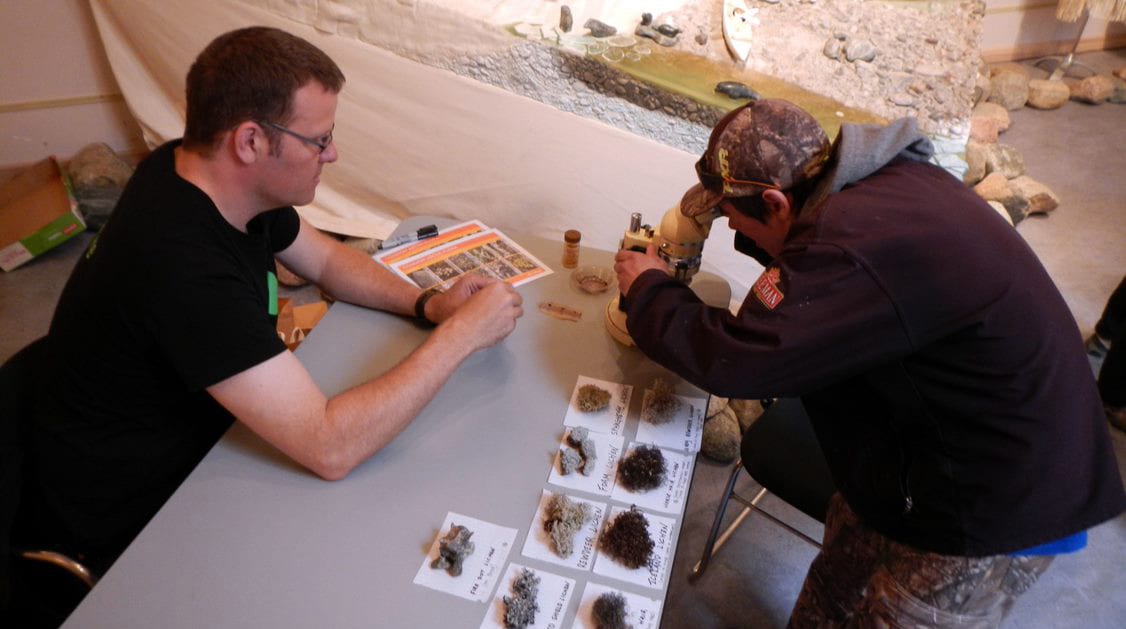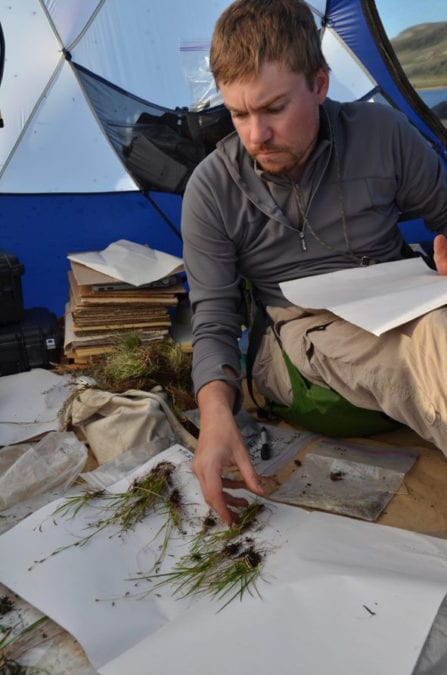The vital research role being played in the Canadian Arctic by the Centre for Arctic Knowledge and Exploration (CAKE) at the Canadian Museum of Nature received a significant boost recently in the form of two cash gifts.
Brookfield Asset Management donated $250,000 to create the D.K. Beckel Arctic Fieldwork Fund, which will focus on advancing critical Arctic field research at the museum, while the Kenneth Molson Foundation donated $50,000 to support the museum’s National Arctic Field Research Fund.

Photo courtesy of Paul Sokoloff, Canadian Museum of Nature
The Canadian Museum of Nature, which is Canada’s national museum of natural history and natural sciences, also embarked on a bold new course on Oct. 7 with the launch of the Nature Foundation, to which the gifts were officially made.
The independent charitable entity will accelerate the impact of the museum’s world-class scientific collections, research activities, and education efforts through philanthropic investments.
Backed by initial support of close to $4 million in total gifts, the Nature Foundation will empower the museum to continue its critical work sharing knowledge with a network of global collaborators and partners that guide science-based decisions on environmental change (especially in the Arctic), species diversity, and conservation.
Dr. Jeff Saarela, CAKE’s founding director and VP, Research and Collections, said the Canadian Museum of Nature has been involved in Canadian Arctic scientific research for more than a century, dating back to the Canadian Arctic Expedition of 1913 to 1918.

Photo courtesy of Roger Bull, Canadian Museum of Nature
He said during the past 100 years it's been involved in learning about biodiversity throughout the Arctic on land, in marine and ecosystems in fresh water, as well as generating new knowledge about the geological diversity.
“We've had teams of scientists work on fossils that are known from the Canadian Arctic of species that lived many millions of years ago when there were large trees, for example, in the high Arctic,” said Saarela.
“That work continues. The Arctic is a huge area and it's very difficult to access remote areas. And the Arctic is changing very quickly.
“We know that the Arctic is warming at twice the rate of the rest of the planet and there are very urgent threats to biodiversity in the Arctic.
“It's very expensive to get up to those remote field sites, and these gifts will allow the museum to continue to engage in the important scientific work we've been doing for a long time now.”
Saarela said teams of zoologists, botanists and paleontologists work in Nunavut and the Northwest Territories in the Canadian Arctic Archipelago primarily, with most of it being done in Nunavut.
He said some of the research they do at the Museum of Nature in the Canadian Arctic is, really, just trying to get some basic understanding of where organisms occur right now – where do they live, where do plants live and where do fish currently live?
“As we know, the climate is warming and there are changes happening all ready. Northerners have been reporting many changes in their local environments for years now, including seeing new species come-in to their communities.
“So, to be able to understand those changes on a large scale, we need information – scientific data on what occurs in time and space right now – so that we have a record by which we can look back and compare as things change in the future.
“These funds will allow us to continue to go into the field, to remote areas that haven't yet been explored by experts who have detailed knowledge about the diversity that lives there, and make collections that are brought back to the museum to become part of the permanent scientific record.
“Because of the Arctic's huge size and expanse – compared to, say, southern Canada where it's very easy to get around – there are huge gaps in our detailed knowledge of local biodiversity.”
Saarela said the type of documentation research they're doing could go on forever, especially as things start to change more rapidly.
He said part of the $300,000 they recently received is going to go into an endowment so that it will be able to generate interest, rather than spending a full $250,000 over a couple of seasons in the Arctic, which isn't hard to do.
“In terms of their impact, these are funds that will exist for a long time so that they'll continue to generate revenue that we can use to support the science.
“With people who study the Arctic, it's almost a race against time right now because the changes are happening so fast. We're not going to be able to get all the baseline data we need before things have already changed.”
Saarela said the science done at the museum is known as collections-based research, so every question they ask is based on the study of specimens that were collected in the environment.
He said the project to digitize the museum’s collection, called Expedition Arctic Botany, has focused primarily on the plants and lichen from the Canadian Arctic.
“We have the world's best scientific collection of plant species from Canada's Arctic and, once preserved properly, they last for centuries.
“As well, flat specimens are relatively easy to take an image of, and you can do many images relatively quickly.
“The project allows us to share images from our data base on the internet with anyone who's interested in them, whether that be someone who wants to draw Arctic plants, or researchers who are studying the distribution of species, or trying to understand the impact of warming.
“So, the focus of the project is to digitize our Arctic specimens at the museum and make them more widely available to anyone who wants to use them.
“The Arctic digitization project was funded by another gift ($4 million) made by the Ross Beaty family in 2017.”